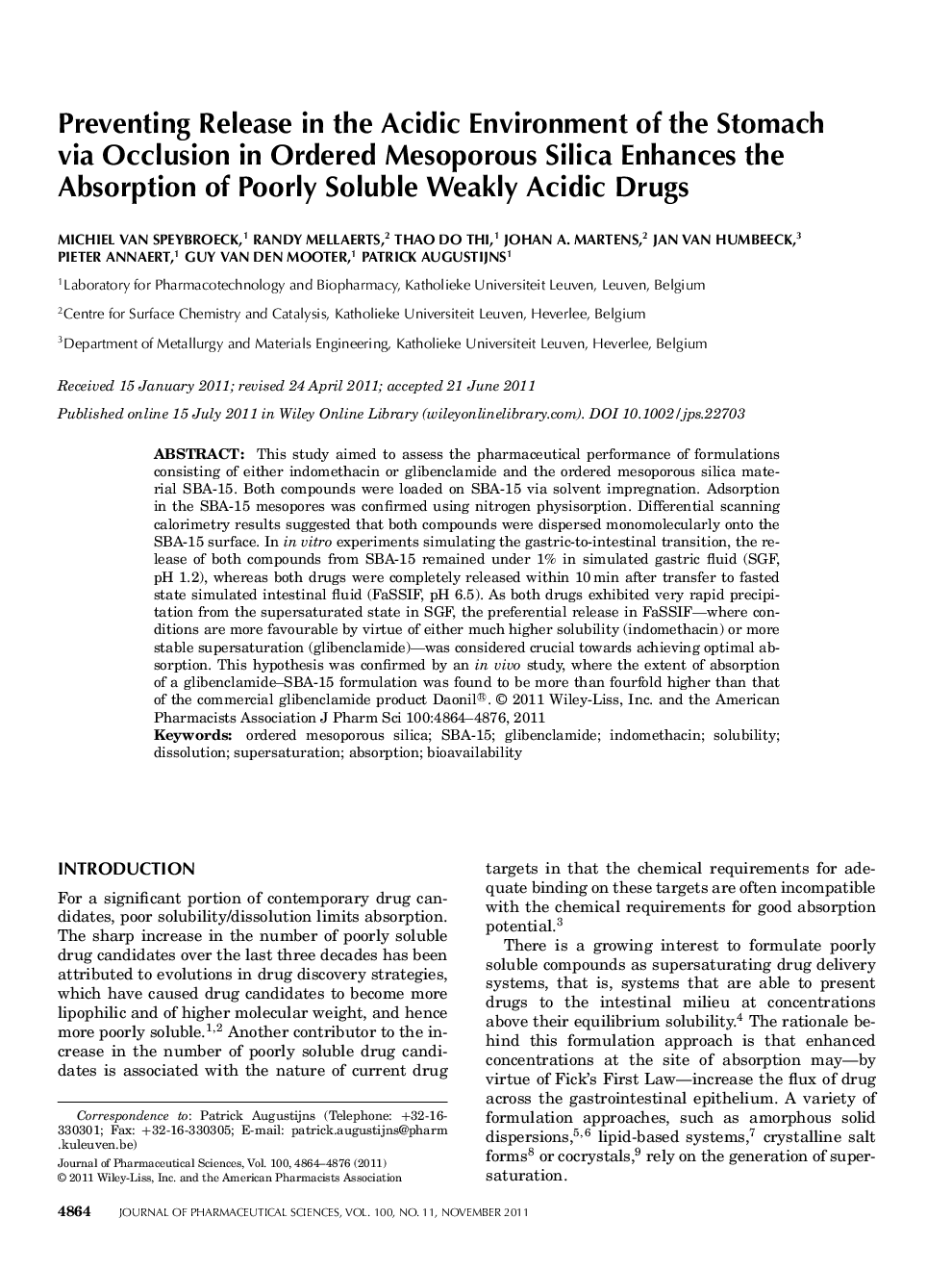| Article ID | Journal | Published Year | Pages | File Type |
|---|---|---|---|---|
| 2486186 | Journal of Pharmaceutical Sciences | 2011 | 13 Pages |
Abstract
This study aimed to assess the pharmaceutical performance of formulations consisting of either indomethacin or glibenclamide and the ordered mesoporous silica material SBAâ15. Both compounds were loaded on SBAâ15 via solvent impregnation. Adsorption in the SBAâ15 mesopores was confirmed using nitrogen physisorption. Differential scanning calorimetry results suggested that both compounds were dispersed monomolecularly onto the SBAâ15 surface. In in vitro experiments simulating the gastricâtoâintestinal transition, the release of both compounds from SBAâ15 remained under 1% in simulated gastric fluid (SGF, pH 1.2), whereas both drugs were completely released within 10Â min after transfer to fasted state simulated intestinal fluid (FaSSIF, pH 6.5). As both drugs exhibited very rapid precipitation from the supersaturated state in SGF, the preferential release in FaSSIF-where conditions are more favourable by virtue of either much higher solubility (indomethacin) or more stable supersaturation (glibenclamide)-was considered crucial towards achieving optimal absorption. This hypothesis was confirmed by an in vivo study, where the extent of absorption of a glibenclamide-SBAâ15 formulation was found to be more than fourfold higher than that of the commercial glibenclamide product Daonil®. © 2011 WileyâLiss, Inc. and the American Pharmacists Association J Pharm Sci 100:4864-4876, 2011
Keywords
Related Topics
Health Sciences
Pharmacology, Toxicology and Pharmaceutical Science
Drug Discovery
Authors
Michiel van Speybroeck, Randy Mellaerts, Thao Do Thi, Johan A. Martens, Jan Van Humbeeck, Pieter Annaert, Guy Van den Mooter, Patrick Augustijns,
